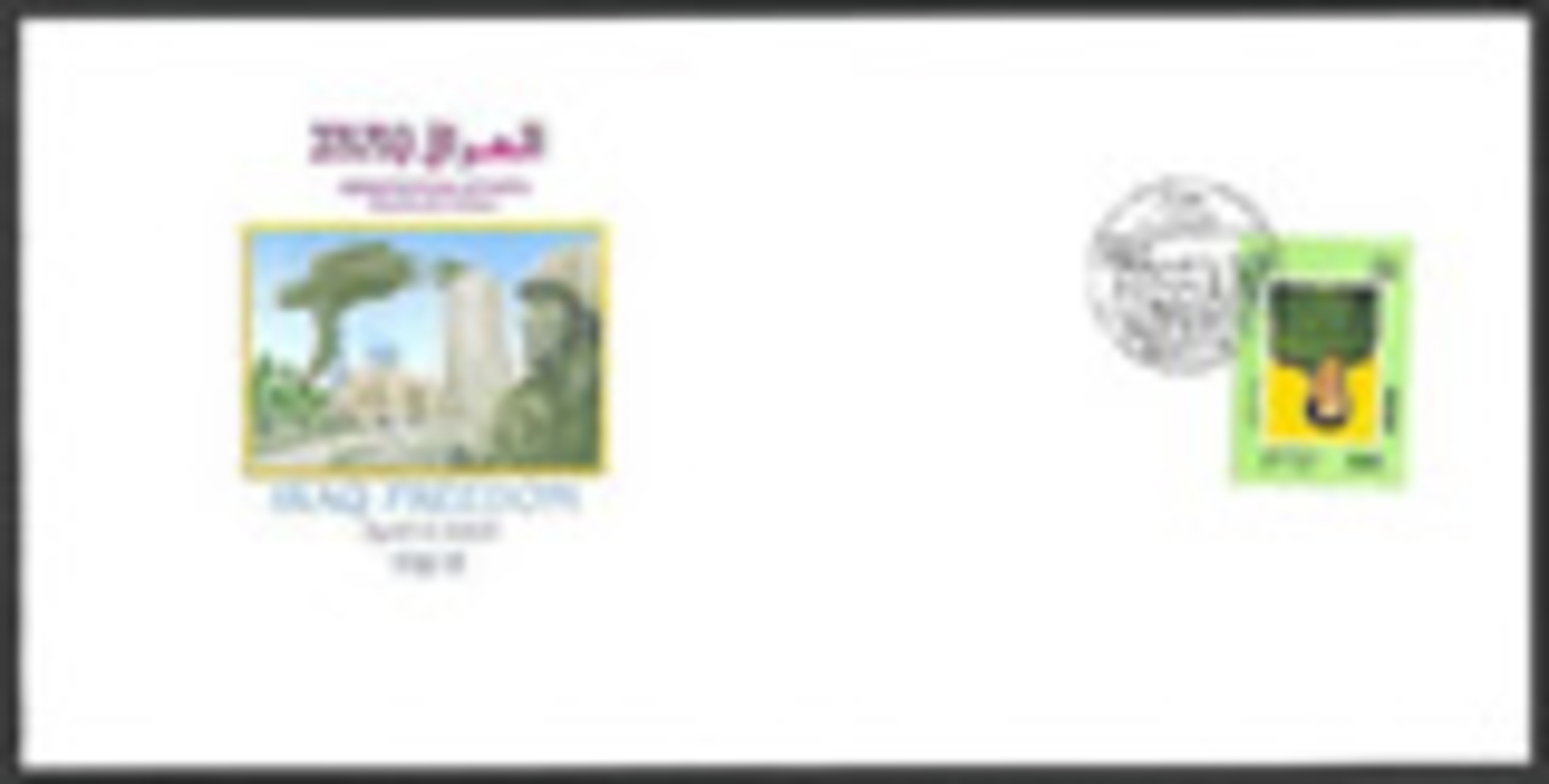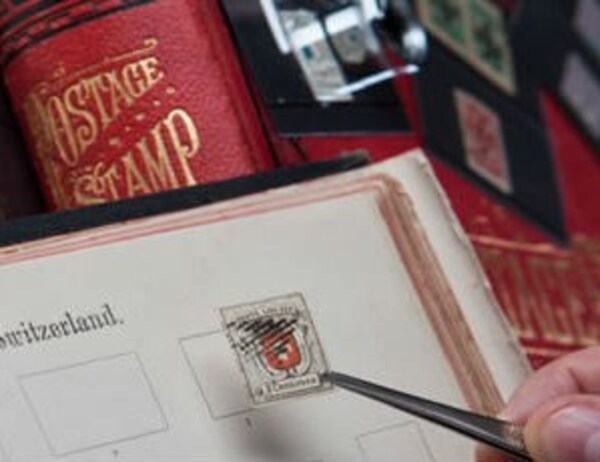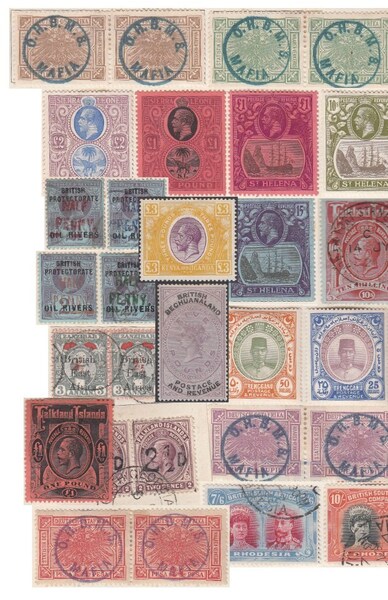With the wars in Afghanistan and Iraq apparently resolved, one of the questions most frequently asked in philatelic circles concerns the normal resumption of postal services. What steps, if any, have the Coalition forces taken to establish posts and communications? Are postal facilities confined to the occupying troops or can the civil population make use of them as well?
Reports from these areas of conflict are meagre and often contradictory. Both Britain and the US operate a field post system enabling their forces to communicate rapidly with the folks back home. Outgoing mail is, we understand, transmitted free of charge at the present time. Inward mail is likewise free, provided that letters are confined to the special services aerogrammes available on demand in most post offices.
The only details we have at present regarding mail facilities in Iraq have been gleaned from Marine Corps News, the official journal of the US Marine Corps, but if this is typical, then we may rest assured that American service personnel at least are well catered for. A story by Captain Alison Salerno, dated late October, reveals that postal requirements for the combat troops involved in the invasion and subsequent occupation of Iraq were handled by a squad of ten men and women from Combat Service Support Battalion 10 of the First Force Service Support Group.
Postal headquarters for the US forces is located at Camp Edson, set up on the campus of Al Qadisiyah University in Ad Dinwaniyah near Baghdad, using the university library as the post office. In the first week of the war alone this squad handled 145 20-foot containers of mail sent from the USA to the combat zone. Letters and packets addressed to almost 25,000 Marines as well as other units throughout Iraq were sorted manually. If all the mail were laid out it would have filled a football field to a depth of three feet. Fortunately, there was no shortage of volunteers from combat units to help sort the mail as everyone was anxious to expedite letters from home.
Tantalisingly, however, no details were given regarding the postmarking of outgoing mail although it may be assumed that machine cancellations as well as handstamps with APO numbers are in use.
No attempt was made to take over the civilian postal service which continues to function much as it did under Saddam Hussein. It has to be said that Iraqi stamps since about 1990 have been generally of very poor quality in design and execution, with numerous provisional surcharges to cope with inflation. It is understood that many of these overprints have been forged - not to deceive collectors, for there is virtually no philatelic market, but to defraud the postal revenue. At the end of the day, the philately and postal history of Iraq in the period of the two Gulf Wars and their aftermath promises to be very interesting.
Past history has shown us that, even in the fiercest conflicts, there is usually someone with an eye to the main chance. In Iraq, for example, an outfit calling itself Mseopotamia Stamps, hurriedly rushed out souvenir covers at the fall of Baghdad. The current definitive portraying Saddam Hussein was affixed upside down, and a commemorative handstamp was applied, but it seems highly unlikely that this was anything more than a private speculation. Still, collectors in America seem to have fallen over themselves to acquire these dubious mementoes at $10.
A similar situation exists in Afghanistan. Here again, postal services virtually collapsed under the Taliban regime and at the present time the situation is worse, rather than better, with the government postal service virtually confined to Kabul and its suburbs. The rest of the country is in the hands of various war-lords and opposing factions, none of whom appear to have given a thought to postal services, far less any attempt to make philatelic capital from the situation. Latest word from Kabul is that Internet cafes have sprung up, offering infinitely faster communication than 'snail mail ' - for those can afford it. Electronic mail, it seems, has now eclipsed conventional mail to a large extent.
Casting back to previous conflicts, however, we can find numerous examples of stamps from war-torn Yugoslavia, with stamps from occupied districts such as Slavonia and Kraina as well as the conflicting issues of Serbs, Croats and Moslems in Bosnia and Herzegovina. The situation in Kosovo is unclear and for that reason various smart operators cashed in with various colourful sets of frankly thematic appeal. Despite bearing the name of that region, it is unlikely that any of these confections ever saw the Balkans.
Occupation stamps have a surprisingly long history. As far back as 1864 the German Federal Commissioners in Holstein rushed out a stamp on 1 March that year, following the invasion of the disputed duchy by Austrian and Prussian troops. By the Convention of Gastein, the administration of Holstein was handed over to Austria in November 1865 and stamps were thereafter issued by the Austrians for use in Holstein. Joint issues of stamps were made by Austria and Prussia in the neighbouring duchy of Schleswig in 1864-5 and by Prussia alone between November 1865 and mid-1867.
Disputes over the administration of the former Danish duchies led to the Seven Weeks' War between Austria and Prussia (1866) and the complete takeover of the duchies by Prussia. In January 1868 the duchies were absorbed into the North German Confederation and used its stamps from then onwards.
Stamps for use in occupied territory ere subsequently issued by the North German Confederation for use in Alsace-Lorraine and other parts of France occupied by German forces during the war of 1870-71. They were inscribed in French language and currency to avoid offending the national sensitivity of the French.
A plethora of overprints arose from the Chilean occupation of Peru in the Pacific War of 1878-83, while very distinctive octagonal stamps were produced in 1895 when the Turks invaded Thessaly. US stamps were overprinted for use in Cuba, the Philippines and Puerto Rico in the aftermath of the Spanish American War of 1898. At the end of the 19th century both Britain and Russia issued stamps in those parts of Crete which they occupied, while various local issues resulted from British occupation of the Orange Free State and Transvaal during the Boer War.
In the years immediately before World War I temporary issues appeared in the Dodecanese and Aegean Islands, occupied by Italy and Greece respectively, and later as a result of the Greek seizure of Macedonia and Thrace.
The war, of course, gave rise to numerous issues as the various belligerents occupied each other's territory or fought over neutral areas. The Germans occupied Belgium, northern France, Poland, Romania and parts of Russia, while the Austrians occupied parts of northern Italy, Serbia and Montenegro. In the Pacific, Australian forces seized German New Guinea and the North-west Pacific islands, while New Zealand occupied Samoa. Togoland was jointly occupied by France and Britain.
Localised conflicts yielded an astonishing array of makeshifts, from the typewritten stamps of Long Island (1916) to handstruck stamps in Albania and parts of Russia. What is now Iraq was invaded by British and Indian troops and resulted in Turkish stamps overprinted for use in Baghdad and Mosul as well as Mesopotamia as a whole.
Although the Great War ended in November 1918 there was no end to the stamps that arose out of conflicts. The British seized Batum and the Italians marched into Venezia Guilia and later Fiume. The Poles seized Central Lithuania and the Germans occupied Dorpat, while the Finns briefly wrested Aunus and North Ingermanland from Russia.
1919 was a particularly bad year for Hungary which endured several invasions. The French occupied Arad, the Romanians Transylvania and the Serbs Baranya and Temesvar. All of these produced numerous stamps, but in addition the Communists seized power and were then ousted by right-wing forces led by Admiral Horthy. Apart from a handful of distinctive stamps, these conflicts were signalled by overprints, and sometimes overprints on earlier overprints.
Between the world wars stamps dutifully chronicled the ebb and flow of conflict, of invasion, occupation and liberation, from the occupation of Castellorizo by the French (1920) and then its seizure by the Italians who called it Castelrosso, to the Nazi occupation of the Sudetenland (1938) and the seizure of Bohemia and Moravia a few months later. The Hungarians seized Ruthenia and the Poles briefly occupied Teschen. All of these upheavals were charted philatelically, both in nationwide stamps and also in a spate of local provisional issues.
Needless to say, World War II produced an enormous quantity of stamps, stationery and other material. The distinctive postmarks of army, navy and air force postal services, stamps for invasions, occupations and liberations followed the pattern of earlier conflicts. Additionally there was much more material from the darker side of war, the stamps and stationery from the Lodz Ghetto and Theresienstadt, the poignant cards from concentration camps and the handstruck stamps from the services organised by Polish prisoners in Murnau, Grossborn and Woldenberg. At various times there have been stamps from displaced persons and refugee camps as well as issues by postal services organised behind enemy lines by guerrillas, from Poland to the Philippines.
From the War Tax stamps of World War I to the various issues of governments in exile in both world wars, from the franking labels used by military forces in many countries to the picturesque soldiers' stamps of neutral Switzerland, from the crude stamps of North Korea during its invasion of the South to the overprints of India for her forces operating with various UN peacekeeping missions, even the occupation and subsequent liberation of the Falkland Islands, mail in conflict has always provided a wealth of material for the philatelist and postal historian.


 General
General
 General
General
 General
General